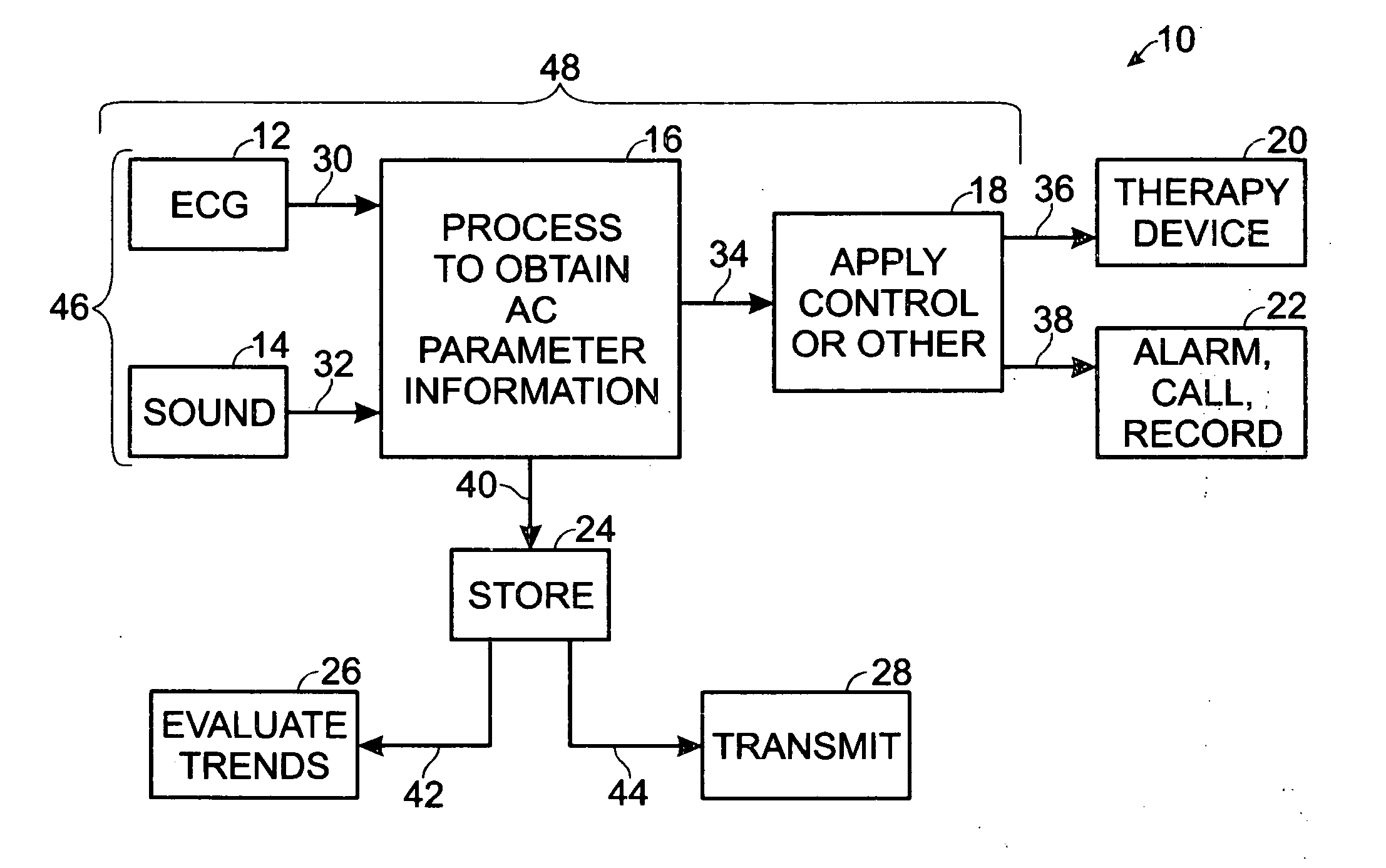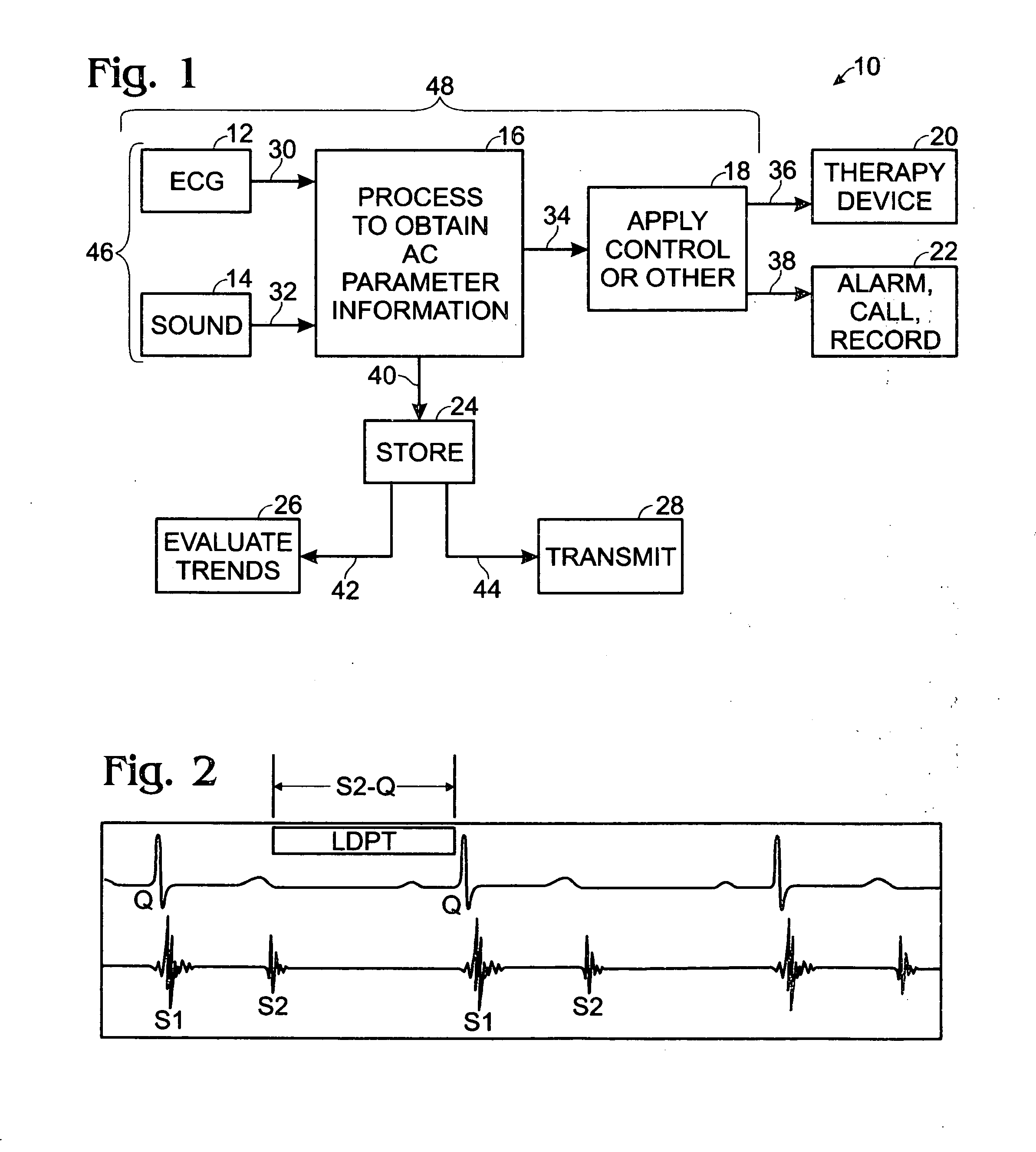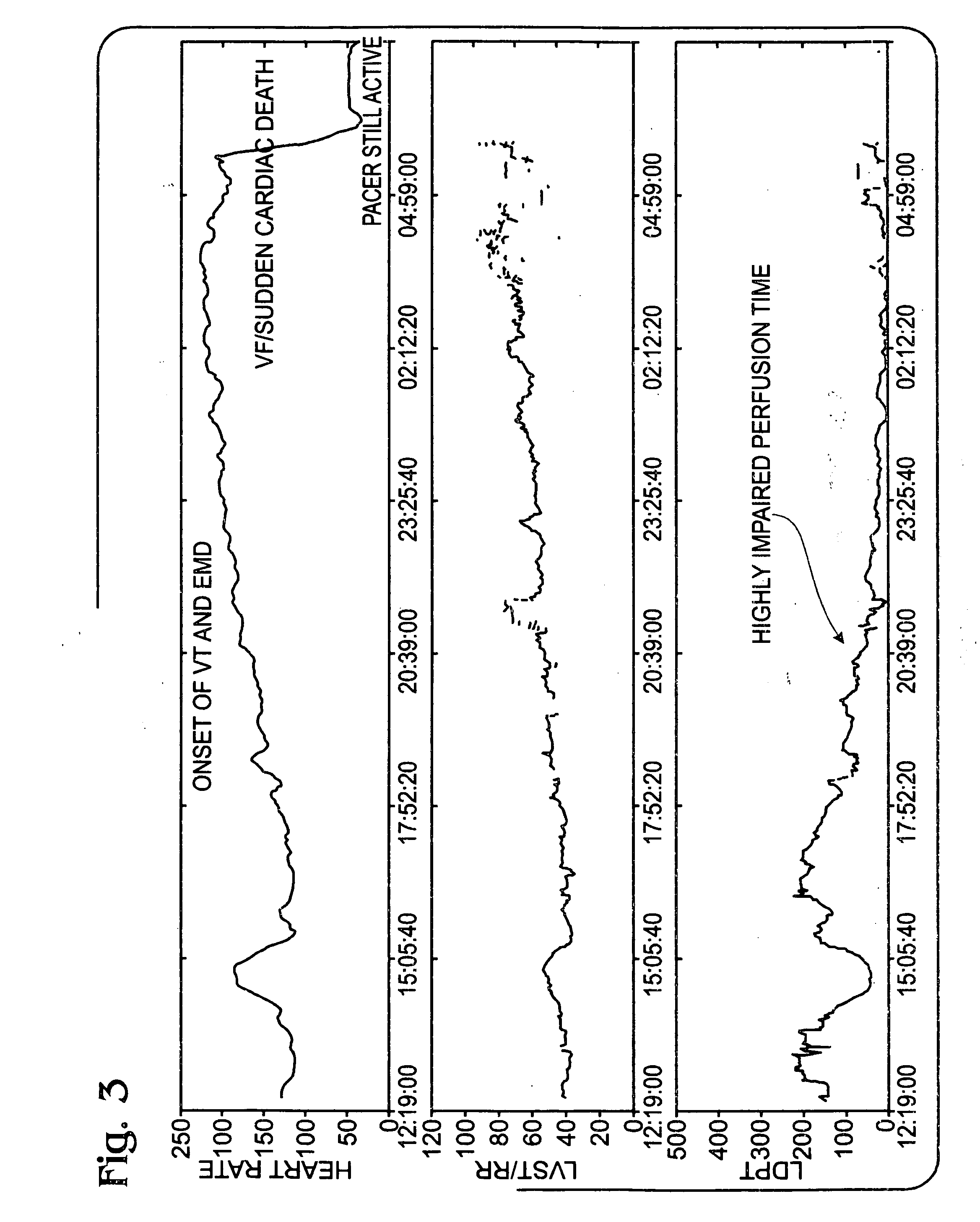Assessment of ischemia, and risk of sudden cardiac death, VIA heart-functionality parameter and acoustic cardiographic monitoring
- Summary
- Abstract
- Description
- Claims
- Application Information
AI Technical Summary
Benefits of technology
Problems solved by technology
Method used
Image
Examples
Embodiment Construction
[0033]Turning now to the drawings, and beginning with FIG. 5, for those who are generally skilled in the relevant art, the content of the time-based graphical display which is presented in this figure is completely familiar, and requires no particular elaboration. As will be observed, this content plainly illustrates the characteristics of the several, particular, different heart-functionality (physiologic) parameters, both electrical and acoustical, which differentially play roles in the AC-Value calculating practice of the present invention. These parameters, whose respective definitional characteristics which are relevant herein have been set forth above, include LDPT, % LVST, S3 strength, S4 strength, and EMAT. How these parameters play roles in the practice of the invention will become apparent in the discussion which follows shortly below.
[0034]Focusing next, briefly, on FIGS. 2-4, inclusive, from the descriptions of these three figures which have been given above, and from th...
PUM
 Login to View More
Login to View More Abstract
Description
Claims
Application Information
 Login to View More
Login to View More - R&D
- Intellectual Property
- Life Sciences
- Materials
- Tech Scout
- Unparalleled Data Quality
- Higher Quality Content
- 60% Fewer Hallucinations
Browse by: Latest US Patents, China's latest patents, Technical Efficacy Thesaurus, Application Domain, Technology Topic, Popular Technical Reports.
© 2025 PatSnap. All rights reserved.Legal|Privacy policy|Modern Slavery Act Transparency Statement|Sitemap|About US| Contact US: help@patsnap.com



